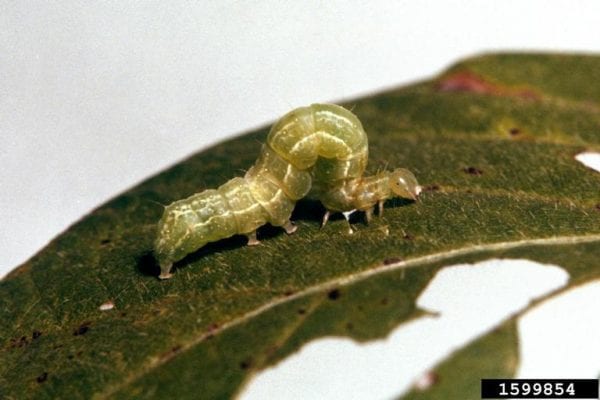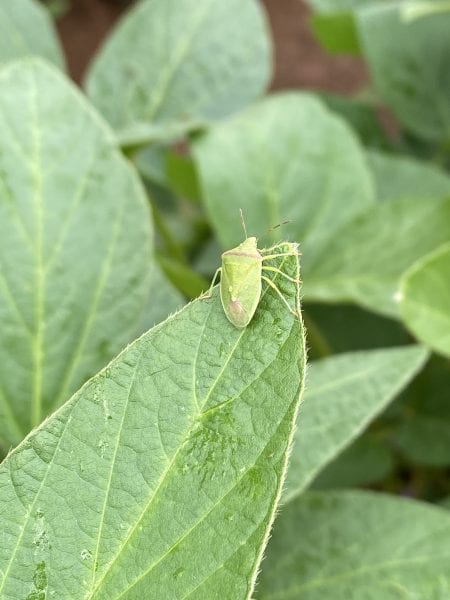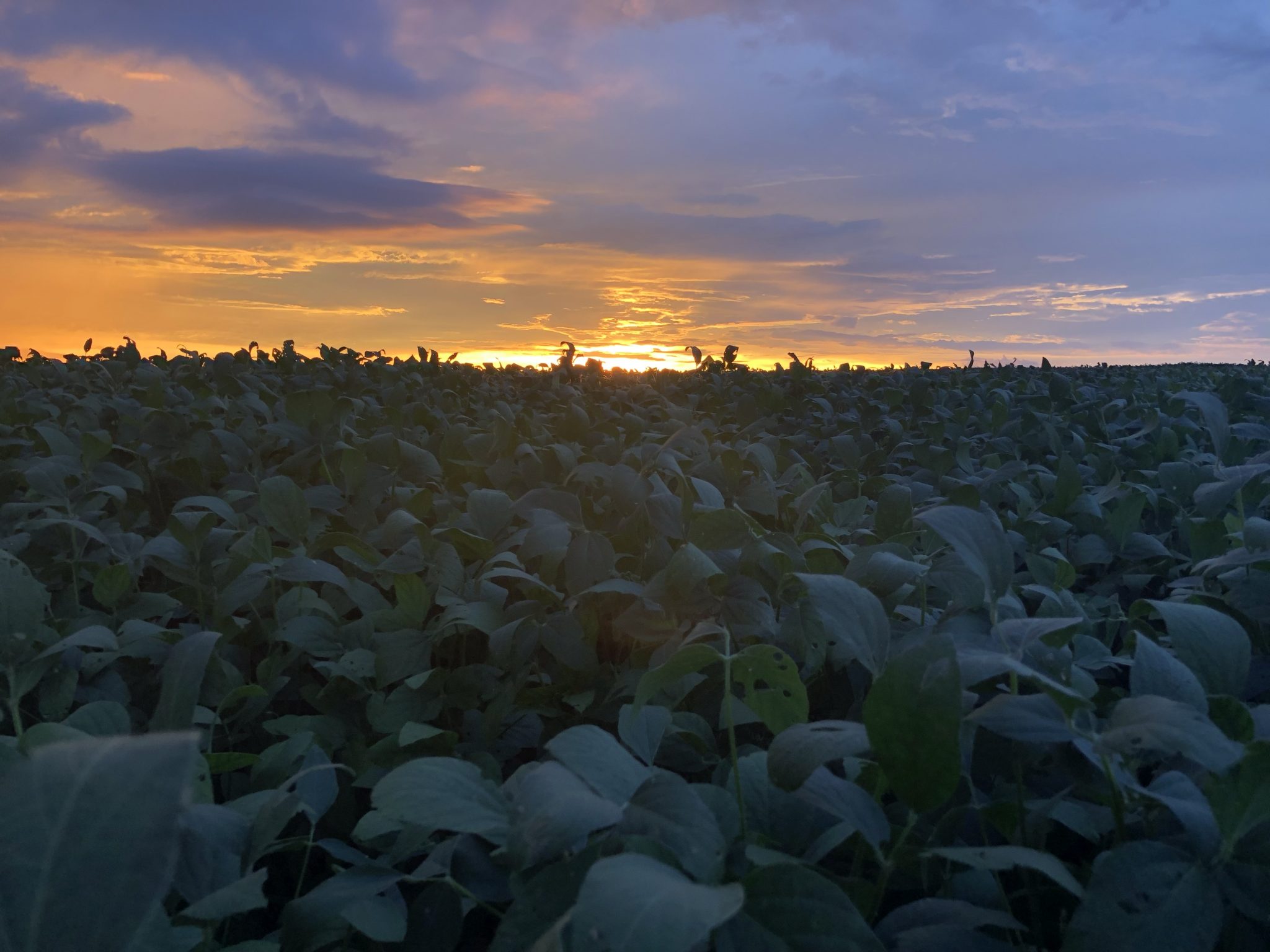Crop Production

Soybean Loopers

Soybean looper.
Image by John C. French Sr., Retired, Universities:Auburn, GA, Clemson and U of MO, Bugwood.org
Soybean loopers are commonly found in Alabama soybean fields from August through September. The larvae are light green with two pairs of prolegs and move in a looping or inching motion. Their bodies tend to be thicker at the tail end and slim near the head. They develop over a two to three-week period before pupating and becoming moths.
Soybean loopers are foliage feeders that can devastate soybeans when high populations are present. In a unique fashion, loopers begin feeding on the bottom half or third of soybean canopies. This feeding habit makes detecting early infestations difficult and good insecticide coverage important for control. As the larvae matures, it begins to consume larger amounts of leaf matter. The vast majority of the damage soybean loopers cause occurs during the last four to five days of the larval stage. Thus, identifying and controlling this pest prior to larvae growing greater than 0.5 inch is key for management.
Other defoliating caterpillar pests commonly found in Alabama soybeans include velvetbean caterpillars and green cloverworms. While also green, these pests are differentiated from loopers by the presence of four pairs of prolegs on velvetbean caterpillars and three pairs of prolegs on green cloverworms. Proper identification of these pests is important. Velvetbean caterpillar and green cloverworm can be easily managed with most labeled insecticides. However, soybean loopers are more difficult to control because they have developed resistance to many insecticide chemistries.
Redbanded Stink Bugs

Adult Redbanded Stink Bug
The redbanded stink bug (RBSB) is another pest that can establish in Alabama soybean fields. This semi-tropical stink bug is not native to Alabama but has been observed overwintering as far north as Prattville. The adult RBSB is green with a red, purple, or orange-ish colored stripe across the back of its thorax. Redbanded stink bugs are about half the size of other commonly found green colored stink bugs. The key characteristic of adult RBSB is a fixed spine that arises from the abdomen. Immature RBSBs are rather distinct as they are more oval-shaped than most immature stink bugs are. Redbanded stink bug eggs are greyish, barrel shaped, and laid in rows of two.
The RBSB is an important pest to watch for because it does more damage than native stink bug species (e.g., green and southern green stink bugs) and is more difficult to control. All stink bugs are preferentially seed feeders, thus populations tend to build as soybeans mature to the R5 to R6 growth stages. Producers should pay close attention to early planted soybean fields at this time and especially late planted soybeans during the seed fill stages. Fields planted at both ends of the planting window tend to have the highest populations of RBSB. In addition to causing more damage in general, RBSB can also damage more mature beans than other stink bugs. Proper scouting and identification are important to properly manage this pest.
More Information
Information on thresholds and recommended insecticides can be found in the Alabama Extension Soybean IPM Guide or by contacting Scott Graham or Ron Smith.

